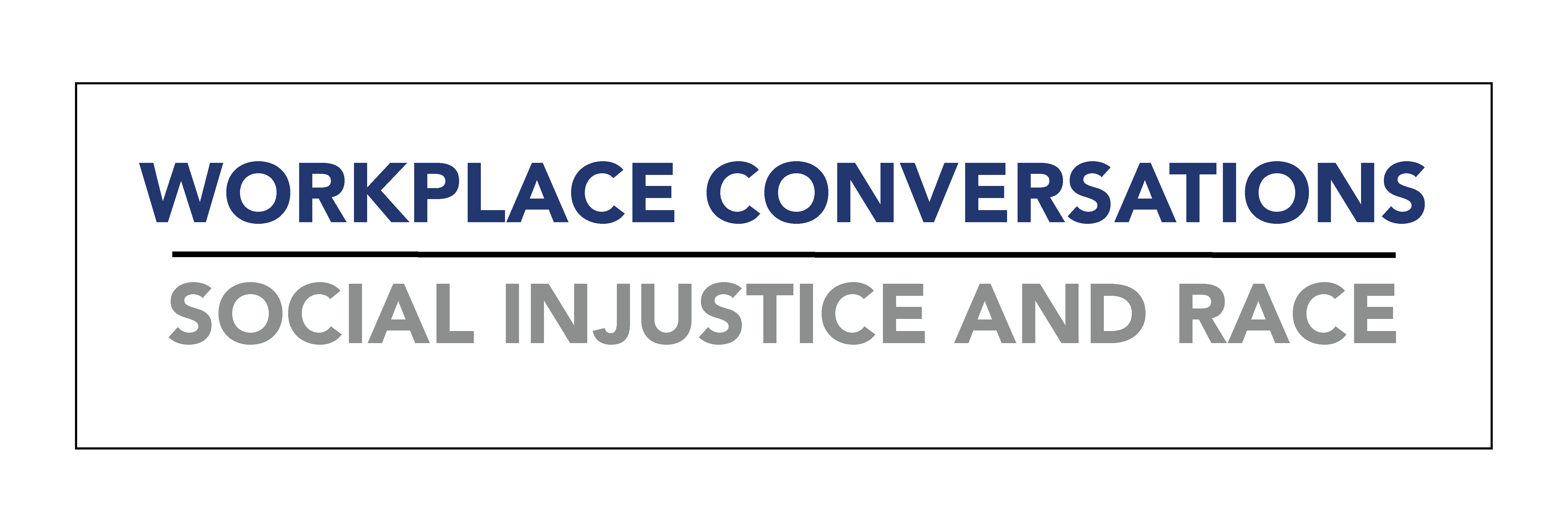
DAY TO DAY INTERACTIONS

It is essential to acknowledge the headline and acknowledge how difficult it is for everyone to digest the news and then shift to focus on work. This can be done in a variety of ways. You could send a simple note to your team acknowledging the event and tell the group that you understand that this can be stressful.
You could check-in individually with each team, desk to desk, or virtually if working remotely. You could also consider a short virtual conversation where you can see each other and discuss how they are feeling to show empathy. Another alternative would be to include a simple check-in at the end of an email exchange or the start of each meeting. Here are examples of what you could say:
"I know there have been several troubling events. How are you coping with everything?"
or
"We all have seen the disturbing events in the news. How do you feel about it?"
All you have to do is listen. A simple response could be:
"I am so sorry to hear how you are feeling. It is troubling to me too. Please let me know how I can support you."

Let the team know that they can take time off to do some self-care and to collect themselves. Encourage the team to support one another during a difficult time. Identify supportive resources NIH has to help them with coping, including the Employee Assistance Program (EAP). Managers should also take time off if needed as well. Encourage "unplugging" at times.

Encourage people to write about the incident in personal newsletters, blogs, or social media accounts – writing helps people process and give a sense of control over the situation in that they may feel they are doing something productive that can help others. Other ways to take action:
Support organizations that support social justice
Attend listening sessions
Self-education on the events and history leading up to the national response

Do not worry about saying the wrong thing; the focus is on listening. People want to be heard. If you use open-ended questions, you are allowing them to share their feelings and encourage a broader dialogue. The point is to show that you acknowledge the incident and allow for space so that people can express how difficult it is, and people can learn and understand the diverse perspectives and impact these events have.
Tell them that you want to support them, and you want to hear from them.
GROUP LISTENING SESSION
Here are some tips about conducting a Listening Session with your team:
Make attendance at the meeting optional – some conversations may be triggering for some people, and we have to recognize that our employees have different needs regarding their preferred method of processing these events. Employees should be encouraged to excuse themselves if they are not comfortable talking about it.
Set ground rules for those participating in the sessions: Before diving into the discussion, lay some ground rules – avoid political debate, avoid Hatch Act related discussions, make points respectfully, and everyone must agree to disagree but seek to be curious to understand one another during the conversation. If remarks are made that are inappropriate or offensive, interrupt and redirect folks to the ground rules.
Curiosity is the key, not judgement
Do not use harmful or dismissive language
Be present
Be open to learning from others
Speak for self and not others
Observer confidentiality
Allow for first-time mistakes
Don't interrupt - listen actively
Keep comments on topic
Be aware of your hot buttons
Be respectful
Acknowledge that people process these traumatic events differently and recognize that some may not be comfortable attending or choosing to participate in the discussion, or they may not feel comfortable speaking or sharing but may take comfort in listening.
Let employees know that you care, that this is difficult, and that it is difficult for you too.
Tell them that you recognize that employees may have difficulty returning to work or concentrating while at work.
Encourage employees to take time off, even a few hours each day to do what they need to do to recharge and feel ready to come back to work. Encourage conversations around self-care and what that looks like.
Encourage the team to speak with one another or with their managers to help them process their feelings.
During the meeting, it is helpful to lead the discussion and share how you maybe feeling about the situation if you can. If not, convey to them that this is very difficult for you and that you may not have the words to describe how you are feeling or that you are too emotional to comment right now and then open the floor up for comments from the team.
"I know this is difficult for you."
or
I can see how this can be upsetting. I appreciate how angry you must feel..."
It is not time to agree or disagree with the comments being made unless they cross the line. Remember, you are merely providing a venue for the team to air their feelings and help them with processing. It is also not the time for you to feel compelled to solve all of the problems yourself. People want to be heard.
Thank them for sharing how they are feeling.
If people say things out of anger, acknowledge that this is painful for them, and redirect the conversation to someone who may have a constructive and healthy thought or opinion about the issue.
At some point, it is helpful to facilitate a discussion about "allyship" and how critical it is to help bring about change during these times. Allies were crucial during the Civil Rights Movement and continue to be vital. During the past week of protests, we have seen incredible "allyship" for the African American Community. For instance, these allies put themselves between the African American protesters and the police. We have seen very diverse crowds of people who are protesting alongside their African American brothers and sisters. Globally, the citizens of Paris came out to protest reflecting that this incident is resonating around the world. Ask them:
"What are some ways that allies can help?"
Before concluding, ask:
"What can the team do to raise attention to this in your organization?"
"What connections do you see to your work and diversity efforts at your organizational level?"
This helps engage them in constructive brainstorming about what they can do. It will also help with feelings of hopelessness.
"Would you like a venue to continue talking about the issue?"
"What would that venue look like?"
If you are not comfortable facilitating or leading such discussions, find someonewho is willing to assist you.
RECAP: TOP 10 QUESTIONS AND STATEMENTS
Top seven questions to ask:
"I know there have been several troubling events. How are you coping with everything?"
"We all have seen the disturbing events in the news. How do you feel about it?"
"What are some ways that allies can help?"
"What can the team can do to raise attention to this in your organization?"
"What connections do you see between your work and diversity efforts at your organization?"
"Would you like a venue to continue talking about the issue?"
"What would that venue look like?"
Top three statements to use to show empathy:
"I am so sorry to hear how you are feeling. It is troubling to me too. Please let me know how I can support you."
"I know this is difficult for you."
"I can see how this can be upsetting. I appreciate how angry you must feel..."

